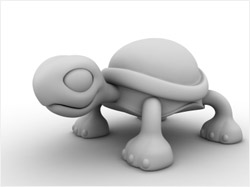
With my experience, I quickly learned that Blender's internal renderer isn't the type of renderer that I really wanted. It was too slow, often freezed my PC, and its materials tab was difficult to grasp. Also, it wasn't able to close until it finished the rendering process. I spent some time researching for 3rd party programs and found a couple. There were quite a few available: Vray, Luxrender, Yafaray, Indigo, and Maxwell Render. Looking for something not complex, I switched to Yafaray. Unlike blender's renderer, this supported caustics, an optical phenomena I needed for 'Diamonds.'
For basics, this site offers a diversity of tutorials for lighting, camera settings, render settings etc. :http://yafaray.org/documentation/userguide
For properly creating a proper environment: http://www.yafaray.org/documentation/tutorials/studiolighting
For a full discription explaining different methods of rendering yafaray support:http://www.yafaray.org/documentation/userguide/lightingmethods
Finally, I was able to finish the scene during the March Break. Through this, I learned of dispersion, absorbsion, photon mapping, pathtracing, and caustics. For 'Diamonds,' I used photon mapping as the primary rendering method.
A option called Raydepth really defined the diamond-like look. It defined the number of light bounces inside the mesh. A good number is 8 to 11. Anything below that makes the diamond look black because, I'm guessing, it absorbs the lighting without letting it bounce off.
Another effect called dispersion is also pretty amazing. From what I understood, it let the light that bounces off refract into individual wavelenghts.
An example of depersion...

Clay render is an extremly useful option available in yafaray. It renders the image without any materials. It is useful for testing out any meshes to see how it turns out. 
Here is the same image with a darker background and a lower gamma. For those who don't know, gamma increases the brightness in a scene.


Here is the same image with a darker background and a lower gamma. For those who don't know, gamma increases the brightness in a scene.
The diamond wasn't difficult to put together. The mesh was modeled on a brilliant cut, a unique type of diamond shape. The only risk was in working with Yafaray. However, Yafaray was not as hard as I expected. Most importantly, Yafaray was accurate, quick and easy.
Hm Really Cool Diamonds Are So Beautiful..
ReplyDeleteWeb designing Karachi